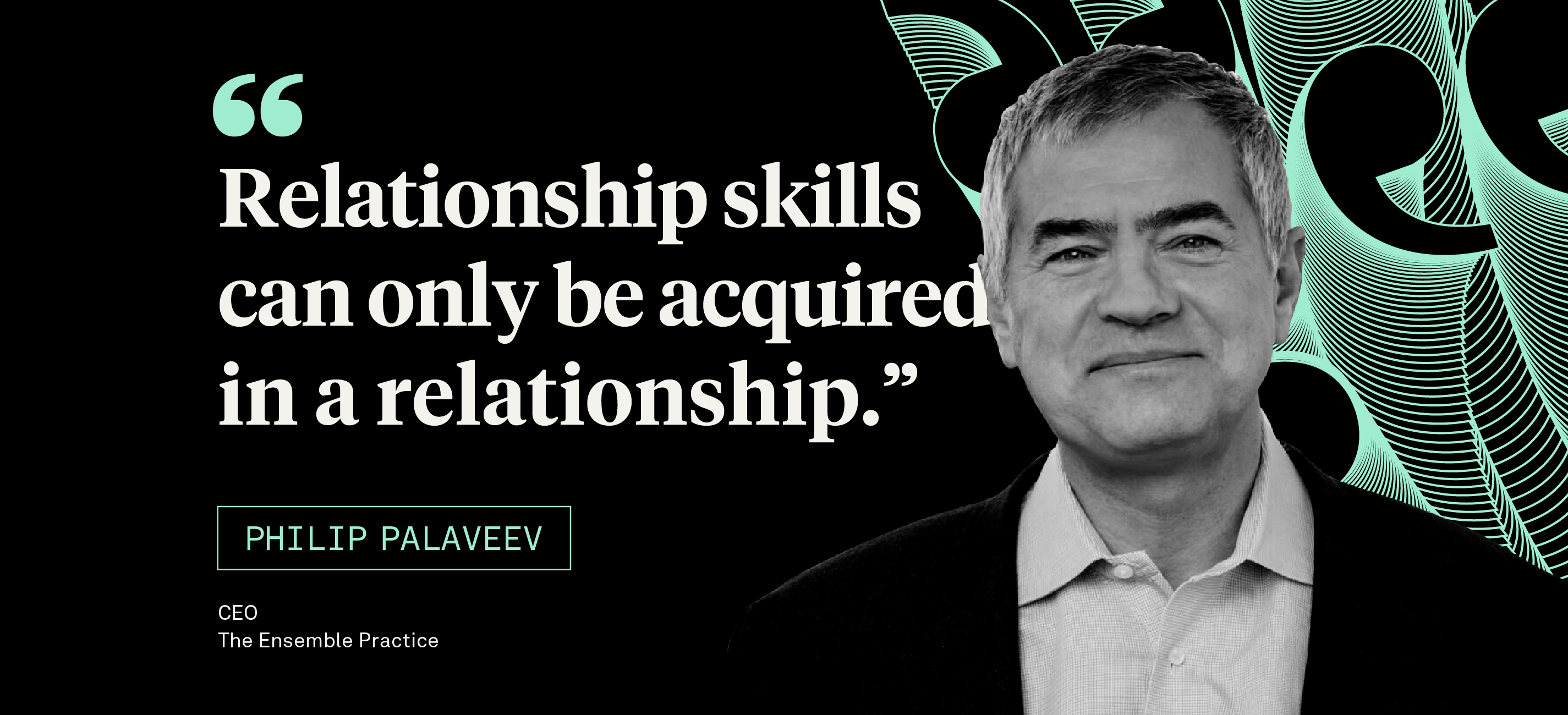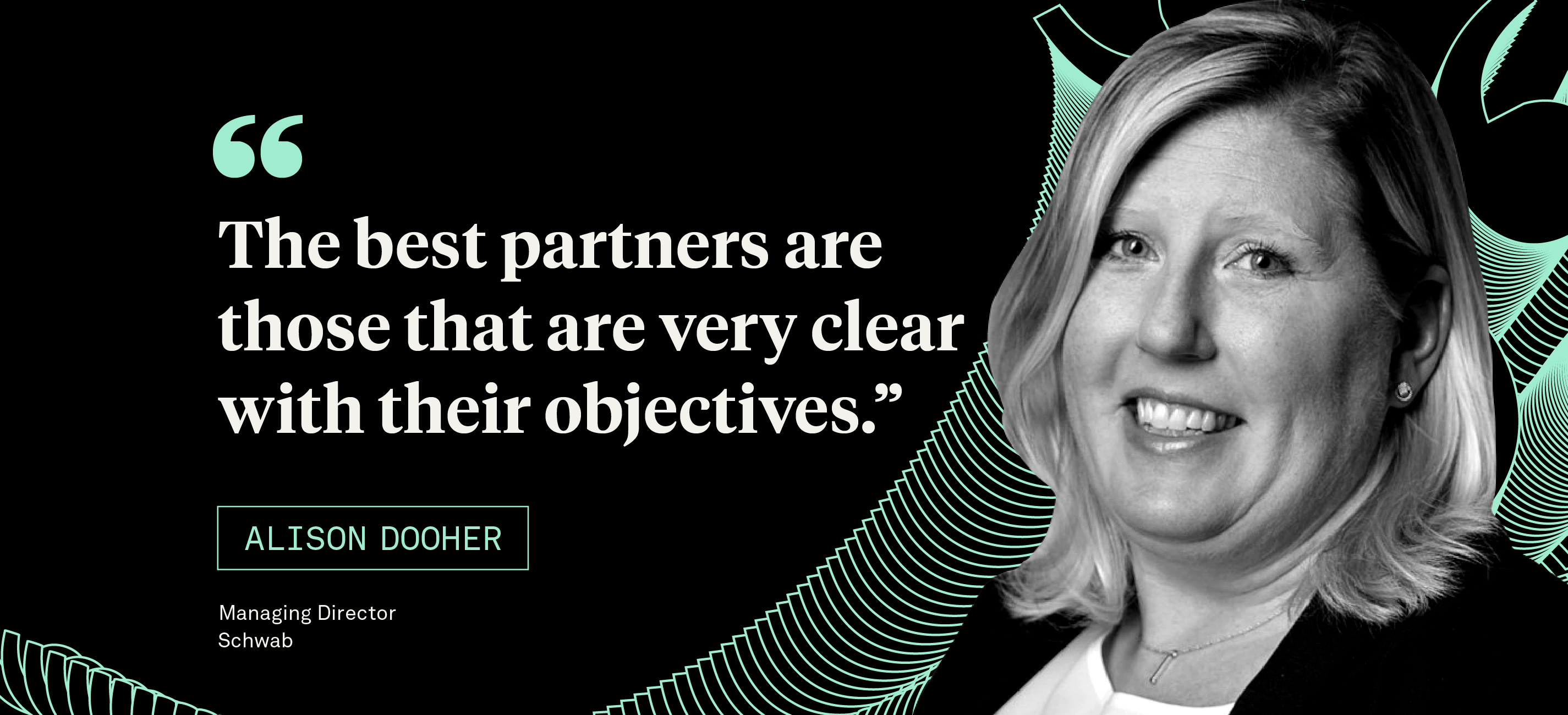It’s time to move digital marketing to the front of the line of your advisory business.
“It costs money, it’s a real commitment, but I couldn’t afford not to do it anymore,” says Brett Bernstein, CEO of XML Financial Group.
Digital marketing is “personalization at scale,” says Cerity Partners chief digital officer David Newson. “It’s the primary pillar of our growth strategy.”
Cerity, like many high-growth firms, now devotes one-third of its marketing budget to digital, a number Newson expects to keep rising. Allworth Financial’s digital budget has jumped from 40% pre-pandemic to approximately 75% this year.
“Our ultimate goal is to drive organic growth,” says Brad Boekestein, Allworth’s executive vice president of marketing. “Digital marketing is highly effective because it eliminates waste, targets more efficiently and is highly traceable.”
All marketing strategies strive to familiarize consumers with the company, let them know what it does and can do for them, generate interest and convert prospects into clients.
Because digital marketing allows firms to focus on particular audiences more precisely than traditional marketing, advisors must first identify the target market they want to reach.
“Digital marketing amplifies and accelerates your brand message beyond the people you already know,” says marketing consultant April Rudin. “You need to be where the target market is.”
To reach that market, digital marketers can employ a wide variety of lead generation tools, including search engine optimization (SEO); paid search (ads in search engines); paid social (ads on social media); ads on digital streaming services; retargeting (ads that follow consumers as they go to different sites) and email campaigns.
No matter which tool you choose, you must continually test its efficiency. Digital marketers rely heavily on what’s known as A/B testing, which compares two versions of an ad or a piece of content to determine which performs better, measured by metrics such as engagement, open rate and conversions. Make sure your practices match your privacy policy before launching new tactics with Google or other third parties.
For example, two sets of users, assigned randomly when they visit your website, are shown different versions of an ad or content where the only thing different is the keyword or call to action prompting the user to click through. Which version was most effective?
“If you’re not doing A/B testing,” says Cerity’s Newson, “you’re doing something wrong. It’s all about testing, learning and refining.”
After you’ve defined your target market, how do you find it?
Some marketers use “look-alike modeling,” which uses data analysis to identify key characteristics of people that match your target audience. You can also find cohorts that already exist on social media sites such as LinkedIn, Facebook, Instagram and Twitter/X.
Buying lists of prospects from third-party vendors is controversial.
Some marketers find third-party lists ineffective, while others find them useful. “It takes a lot to warm up a cold lead,” says Elizabeth Reider, director of marketing at Indigo Marketing Agency. Mercer Advisors’ experience with buying lists has resulted in “low open and engagement rates,” says chief marketing officer Gary Foodim. Allworth, however, has found lists to be effective, provided that the RIA’s internal sales team responds quickly to inquiries, according to Boekestein.
Once a digital prospect shows interest, it’s critical to make sure they’re engaged, which is why marketers say an advisory firm’s website – and the page the prospect lands on – is so important.
“All roads lead back to the website,” says Angela Giombetti, head of marketing for Wealthspire Advisors. “It’s the anchor of your digital marketing strategy and where you get the biggest bang for the buck. The website has to be clean, constantly refreshed and easy to navigate.”
The prospect who does make the effort to click through to your website shouldn’t end up on your home page but be given a customized experience, according to Newson. “They should be rewarded for clicking through and providing some knowledge that they didn’t know before and that they can act on without talking to somebody,” he explains. “You want your site to invite them to go deeper into your ecosystem.”
Advisory firms need to post more videos to boost engagement, says Indigo’s Reider. “Video is outperforming written content and is more engaging,” she says. “Advisors should start pivoting now.”
Original content creation has also become imperative for digital marketing. Allworth has 21 staffers working full-time on content, according to Boekestein. Engaging, creative content will improve your firm’s search engine optimization and establish your firm’s expertise, attracting more prospects.
Be sure your content answers consumers’ most frequently asked financial questions, tells a story and doesn’t just regurgitate facts, creates a sense of community and continually builds your firm’s brand.
Embarking on a digital marketing strategy may seem overwhelming, but you don’t have to “boil the ocean,” as Foodim puts it. Even smaller firms with a limited budget can leverage available resources to benefit from digital marketing, says industry consultant Tim Welsh, CEO of Nexus Strategy.
“Smaller firms used to be limited to their local market, but since the pandemic and the widespread adoption of Zoom, that’s not true anymore,” Welsh says. “Your clients can be anywhere. Digital ads on Twitter are cheap and local search ads are also affordable. And if you create good content, the search engines will find you. You don’t have to spend a lot of money.”
After hiring a marketing director, XML began outsourcing content creation to firms and began using CRM software to track and automate digital marketing campaigns. Advisory firms don’t have to buy the most expensive CRM tools on the market to be effective, Bernstein says. However, they need to “make sure they know what sandbox they’re playing in” before launching a digital campaign.
Above all, marketers caution to be patient.
“Don’t give up too early,” says Boekestein. “You’re not selling a product; you’re selling a lifetime relationship, so there’s a huge trust hurdle. It’s not going to come quickly. The first six months will be a loss, so commit for at least a year.”
Cerity’s Newson agrees.
Digital marketing “is not something you can tinker with,” he emphasizes. But the commitment is worthwhile, he adds: “Digital is the new frontier of establishing a relationship of trust with the client.”
So how are some of the industry’s fastest-growing RIAs approaching digital marketing? Action! looks under the hood:
Allworth Financial
Consumers “who will pay for financial advice” are the Holy Grail of Allworth’s digital marketing campaign, says Brad Boekestein, EVP of marketing. While traditional marketing in a medium like AM radio can reach a broad audience, 60% to 70% of that audience will never pay for financial advice, Boekestein notes.
The difference between traditional marketing and digital marketing is similar to the difference between a scattershot approach and one that is highly targeted, according to Boekestein according to Boekestein. “With digital, you can use the data to boil down the best fit for the client you’re looking for,” he says. “You want to connect the right consumer with the right message in the right place.”
Netflix, for example, offers advertisers “a ton of data” describing their subscribers. Allworth also places digital ads on what Boekestein calls “connected audio” – streaming platforms such as Spotify, Pandora and iHeartRadio. The firm also uses YouTube TV to target specific consumer segments. Perhaps surprisingly, Boekestein isn’t a big fan of paid search ads. Paying for keywords is “very competitive” and not necessarily efficient, he says.
A typical Allworth campaign targets three distinct segments or “personas:” consumers who are fiscally conservative and risk-averse; consumers who are financially sophisticated and want to be impressed and consumers who have saved money but are concerned they can’t afford to make a mistake and are therefore “complete delegators,” Boekestein explains.
Digital marketing allows Allworth to create “very distinct messages” for each persona is “really powerful,” Boekestein says. And digital’s ability to track views, clicks and conversion rates gives Allworth a bottom-line “efficiency metric.” Every dollar spent on digital marketing “has to produce a certain amount of AUM,” Boekestein says.
Cerity Partners
Cerity’s chief digital officer David Newson credits the pandemic with kicking digital marketing into high gear. “Consumer behavior changed,” Newson says. “Groups like Baby Boomers who hadn’t used digital tools previously became comfortable with them.”
Last fall Cerity launched a new digital marketing campaign spearheaded by a new website and abetted by marketing automation tools. Digital marketing is “critical” for the RIA’s growth strategy, says CEO Kurt Miscinski.
Cerity targets high-net-worth and ultra-high-net-worth consumers who are “active wealth creators and need and appreciate the value of sophisticated financial advice,” says Newson.
Digital marketing can help advisory firms create a feedback loop to “hear the voice of the prospective client,” says Newson, who describes himself as a behaviorist, focusing on “how humans make decisions.”
Cerity uses various digital media, including paid search and paid social. Newson likes Google Search’s ability to contextualize and personalize ads. He’s also a fan of creative social media accounts such as MrsDowJones, the “Zillenial finance expert” on Instagram. Viewers who click on a Cerity link aren’t sent to the firm’s homepage but to a landing page that gives them a “customized experience,” Newson says.
Once on the site, the marketing team can review “all the analytics” on the consumer’s behavior, including where they go and how much time is spent once they get there. That information is designed to discover the consumer’s intent, which helps Newson’s team refine the message that will be conveyed.
“We want to meet the prospective client where they are and drive them to a place where there is an exchange of sufficient value,” Newson says. “We want to move them to the point where they cross the chasm from anonymity to known, without violating their privacy, so we can work together to solve their financial problems.”
Mercer Advisors
Mercer recently refreshed its brand with a “digital direct to consumer” campaign to reinforce the firm’s message that it “helps people understand what their money is for,” says chief marketing officer Gary Foodim.
The campaign uses a “funnel” approach that starts with brand awareness, hopefully leading to consideration and ideally ending with a client conversion. Paid search, paid social, streaming platforms, and retargeting drive traffic.
Mercer’s digital approach is based on “persona-based marketing,” according to Foodim, who earlier in his career was vice president for consumer marketing for Conde Nast. The RIA identifies various personas of target clients, such as college professors who work in the Pacific Northwest. The marketing team then crafts content based on the firm’s expertise.
The firm creates ads for the personas designed to prompt the prospect to click through to a landing page with content unique to their concerns. Mercer uses a data-driven, quantitative approach that measures a slew of metrics, including impressions, clicks, conversions and cost of acquisition.
“Adjustments are made based on data,” Foodim says. A/B testing, he explains, is particularly valuable. “You can’t be successful without it,” he says.
Wealthspire Advisors
Wealthspire’s advisors are the focus of the RIA’s digital marketing strategy, says marketing chief Angela Giombetti.
“We have an advisor brand program,” Giombetti says. “People connect with an individual advisor, not with a firm.” Wealthspire helps craft each advisor’s LinkedIn page and website biography helps create content that matches the advisor’s specialty.
For example, one of Wealthspire’s female advisors works with divorced women and concentrates on expanding her center of influence network. She joined the Forbes Council and contributed content as an expert in the field to her digital footprint online. She also raised her online profile by posting videos on social media, starting a podcast and publishing an e-book.
“We let the advisor choose the content,” Giombetti says. “That way, it’s personal and shareable and doesn’t appear automated.”
Digital ads on local search engines “don’t have to break the bank” and can be highly effective paired with Google’s My Business feature, she adds. Wealthspire wants advisors to optimize LinkedIn, but more as a “validation tool,” Giombetti says, rather than a lead generator.
Digital marketing can seem overwhelming, but advisors should get started by taking “manageable steps,” she says. “Go for small wins, assess carefully and then make adjustments.”
This blog is sponsored by AdvisorEngine Inc. The information, data and opinions in this commentary are as of the publication date, unless otherwise noted, and subject to change. This material is provided for informational purposes only and should not be considered a recommendation to use AdvisorEngine or deemed to be a specific offer to sell or provide, or a specific invitation to apply for, any financial product, instrument or service that may be mentioned. Information does not constitute a recommendation of any investment strategy, is not intended as investment advice and does not take into account all the circumstances of each investor. Opinions and forecasts discussed are those of the author, do not necessarily reflect the views of AdvisorEngine and are subject to change without notice. AdvisorEngine makes no representations as to the accuracy, completeness and validity of any statements made and will not be liable for any errors, omissions or representations. As a technology company, AdvisorEngine provides access to award-winning tools and will be compensated for providing such access. AdvisorEngine does not provide broker-dealer, custodian, investment advice or related investment services.




